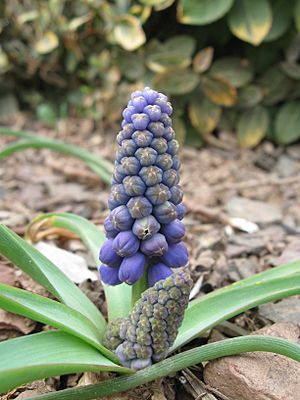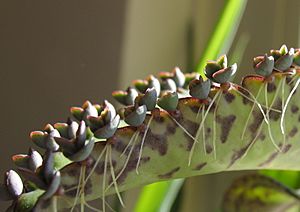Vegetative reproduction facts for kids
Vegetative reproduction is a cool way many plants make new plants. It's a type of asexual reproduction. This means a single plant can create new plants all by itself, without needing seeds or spores. It's like making copies of the parent plant!
Plants use a process called mitosis for this. Mitosis is how cells divide and make exact copies of themselves. So, the new plants are clones. They are genetically identical to the original parent plant. This helps plants spread quickly and take over an area.
This natural process is also used by gardeners and farmers. They use it to grow many useful plants. It's a great way to get new plants that are exactly like the parent plant.
Contents
How Plants Reproduce Vegetatively
Plants have many natural ways to reproduce vegetatively. Some plants grow new roots underground. Others use special parts like bulbs or tubers. Think of onions or potatoes! Some plants grow new vines or shoots above the ground. These new parts can then grow into new, separate plants.
This method is very helpful in agriculture. Farmers can quickly grow many valuable plants. They don't need to wait for seeds to form. This helps them produce more food and other important crops.
Vegetative Reproduction Through Cuttings
One common way people help plants reproduce vegetatively is by using cuttings. This means taking a piece of a plant, like a stem or a leaf, and planting it. If you plant a branch cutting in soil, it can grow new roots. Soon, it becomes a whole new plant!
This method is used for many popular plants. It's an easy way to get more plants without seeds. Some examples include:
- Apple trees
- Avocado plants
- Banana plants
- Cacao (used for chocolate!)
- Orange and lemon trees
- Fig trees
- Grape vines
- Pineapple plants
- Potatoes
- Strawberry plants
- Sugar cane
- Tea plants
Related pages
Images for kids
See also
 In Spanish: Esqueje para niños
In Spanish: Esqueje para niños





